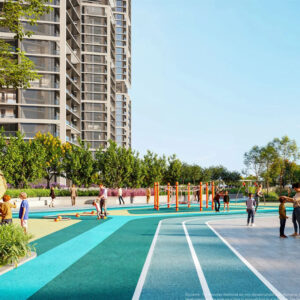Nestled within the fertile Souss Valley, Taroudant, Morocco is a city that whispers tales of history, culture, and authenticity. Often referred to as a miniature Marrakech, this peaceful town offers an immersive Moroccan experience without the overwhelming crowds found in the country’s more prominent tourist hubs. Surrounded by ancient red-mud walls and set against the stunning backdrop of the High Atlas and Anti-Atlas Mountains, Taroudant is a captivating destination for travelers seeking depth, charm, and tranquility.
Whether you’re drawn by its history, intrigued by its crafts, or looking to explore a more traditional rhythm of life, Taroudant invites you to slow down and connect with Morocco’s timeless spirit.
A Glimpse into Taroudant’s History
Taroudant’s origins trace back to antiquity, with Berber tribes settling in the region thousands of years ago. It rose to prominence during the Saadian dynasty in the 16th century when it briefly served as a capital before Marrakech took the spotlight. Thanks to its strategic location, Taroudant was a center for trade and military activity, especially valued for its position along trans-Saharan caravan routes.
The city’s high, ochre-colored ramparts, which stretch for approximately seven kilometers, stand as a proud reminder of its fortified past. These walls, still largely intact, give the town a fortress-like character, enclosing the medina and protecting its cultural treasures within.
The Medina – A Walk Through Authentic Morocco
Unlike the bustling and often tourist-heavy medinas of larger cities, the medina of Taroudant offers an intimate and authentic experience. Narrow alleyways lead to quiet riads, bustling souks, and peaceful courtyards where daily life flows at a slower pace. Locals greet each other warmly, artisans work skillfully with leather, silver, and wood, and traditional scents fill the air—spices, baked bread, and fragrant oils.
There are two main souks in the medina, each with its own specialty. One is focused on food and daily goods, the other on handicrafts and local artistry. Exploring both gives a deeper appreciation of the town’s craftsmanship and vibrant commerce.
The Walls of Taroudant
One of Taroudant’s most iconic features is its imposing city walls, some of the best preserved in Morocco. Built from reddish-pink pisé (rammed earth), these fortifications stand up to six meters high and are punctuated by nearly 130 watchtowers and nine gates. The gates—called “bab” in Arabic—are historical access points to the city, with Bab El-Kasbah and Bab Targhount being among the most notable.
Walking or cycling along the perimeter offers stunning views of the town and its mountainous surroundings, particularly enchanting at sunset when the walls glow in warm golden hues.
The Surrounding Landscape
Taroudant’s location in the Souss Valley means it enjoys a lush, fertile environment. The region is renowned for citrus groves, olive trees, and argan forests, which stretch toward the distant mountains. To the north lies the snow-capped High Atlas range, while the jagged peaks of the Anti-Atlas rise to the south, creating a dramatic natural amphitheater.
Day trips from the city can lead to scenic countryside villages, cascading valleys, or even the road to Tafraoute—a stunning journey through rock formations and Berber settlements.
Culture and Daily Life
Life in Taroudant follows a rhythm rooted in tradition. The town is predominantly inhabited by Berber communities, whose language, dress, and customs add unique character to the local culture. Market days bring nearby villagers into the city, creating a colorful blend of rural and urban life. Donkeys still serve as a common form of transport, and the call to prayer echoes softly from the minarets, anchoring the day with spiritual calm.
Visitors often comment on the town’s genuine hospitality. Locals are known for their warmth and curiosity, often engaging in friendly conversation or offering directions with pride in their hometown.
Architecture and Sights
Besides the medina and walls, Taroudant Morocco offers several architectural and cultural highlights:
-
The Kasbah: Located in the southern part of the city, the kasbah area was once the political heart of Taroudant. Its large open spaces and historic buildings still exude a sense of regal past.
-
Great Mosque: Like many Moroccan cities, Taroudant’s main mosque is central to its spiritual life. While non-Muslims may not enter, its exterior and surrounding area provide a serene place to observe daily life.
-
Palais Claudio Bravo: Just outside the city, this former residence of a Chilean painter showcases a unique blend of Moroccan and international art, design, and landscaping. Though subject to access policies, the palace is often admired for its aesthetic beauty.
Traditional Craftsmanship
Taroudant is a center for traditional Moroccan crafts, particularly silver jewelry, leather goods, and ceramics. The town is especially known for Tifinagh-inscribed Berber silver, which carries symbolic and ancestral meaning. Leather artisans produce hand-made bags, slippers, and belts using ancient tanning techniques passed through generations.
Because the city caters primarily to a local rather than tourist market, prices tend to be fairer and the quality of goods more consistent. Interacting with craftsmen often leads to fascinating insights into their methods and heritage.
Food and Local Flavors
The cuisine of Taroudant is a fusion of Berber tradition and Moroccan culinary flair. Tagines with preserved lemons, lamb with prunes, couscous served on Fridays, and fresh mint tea are staples of daily life. The local souk offers seasonal produce, dried fruits, nuts, and spices in vibrant displays of color and aroma.
Street food also has its place, with simple yet flavorful offerings like msemen (a flaky Moroccan pancake), harira soup, and roasted nuts served in paper cones.
Festivals and Cultural Events
Taroudant may be a quieter town, but it doesn’t lack for cultural celebration. Traditional music festivals, market fairs, and religious events mark the calendar. Gnawa rhythms, Ahwach dances, and storytelling events take place especially during seasonal gatherings or holidays.
These festivals offer a chance to witness the deep-rooted cultural expressions of the Souss region, often accompanied by communal feasts, parades, and colorful dress.
A Slower Pace of Travel
What truly sets Taroudant Morocco apart is its peaceful, unhurried atmosphere. It’s a town for travelers who enjoy wandering, reflecting, and absorbing the essence of a place rather than rushing through checklists. Without the distractions of large crowds or overwhelming commercialism, Taroudant offers space for meaningful connection—with the environment, the people, and yourself.
Final Thoughts
Taroudant, Morocco, is one of those rare places where history, culture, and nature coalesce in quiet harmony. Its enduring walls, welcoming people, and rich traditions paint a portrait of a Morocco that is both timeless and deeply grounded. For those who seek an experience beyond the mainstream, where the pace is gentle and the surroundings are soulful, Taroudant remains a gem worth exploring.
Would you like this article adapted for a specific audience such as eco-tourists, cultural explorers, or historical enthusiasts?









